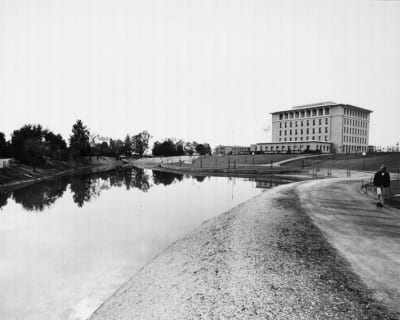Historical Information about UC Davis Campus Buildings
Browse Alphabetically
Buildings F – N
First Administration Building
| Completed: | 1914 |
| Materials: | Wood frame |
| Cost: | $2681 |
| Financing: | State appropriation |
| Architect: | Cunningham & Politeo |
| History: | This building was first used as an administration office building and later as a business office, student store, and the comptroller’s office. It was used as a student store, bookstore, and coffee shop until 1955 when these services were moved to the Memorial Union. It was then occupied by the Cooperative Extension Office until 1992. From 1992-2000 the Cross Cultural Center was housed in this building. In 2012, the Cross Cultural Center relocated to the Student Community Center and the Educational Opportunity Program Office moved to this building. |
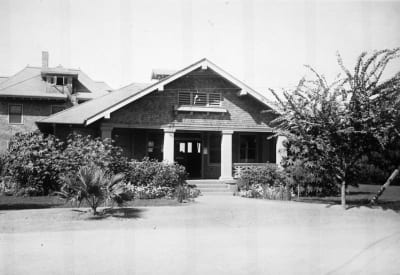
Haring Hall
| Completed: | 1949 |
| Materials: | Concrete |
| Cost: | $2,955,651 |
| Financing: | State appropriation |
| Architect: | Blanchard & Maher |
| Dedication: | The structure was named in 1953 in honor of Clarence M. Haring (1878-1951). He was the primary organizer of the School of Veterinary Medicine and served as dean from 1947-1948. |
| History: | The division of Veterinary Science moved from the Animal Sciences Building (now Hart Hall) to Haring Hall upon its completion. When the Vet Med 3B building opened in 2013, it provided replacement space for Veterinary Medicine laboratories and offices previously located in Haring Hall. |
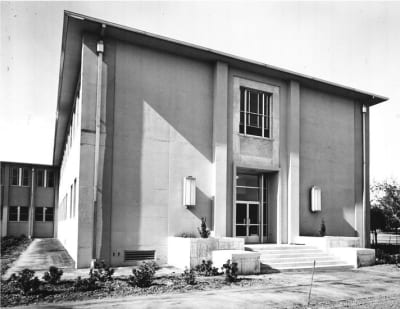
Hart Hall
| Completed: | 1928 |
| Materials: | Reinforced concrete |
| Cost: | $256,879 |
| Financing: | State appropriation |
| Architect: | William C. Hays |
| Dedication: | The building was renamed George Hart Hall in 1983. Hart’s career at the University of California began in 1917 when he joined the faculty at Berkeley as Professor of Veterinary Science. He came to Davis in 1926 as Professor of Animal Husbandry and Chairman of the Department, a position he held until 1948, when he became Dean of the School of Veterinary Medicine. He retired in 1954. |
| History: | When the Animal Science Building was completed in 1928, it housed the Animal Husbandry Department as well as the divisions of Veterinary Science, Entomology, and Zoology. In 1949, Veterinary Science moved to the new Haring Hall. Entomology stayed in the building until 1948-1949 and Zoology until 1969. In 1986, Hart Hall was listed in the National Register of Historic Places. In 1987, the Animal Sciences Department moved to the new Meyer Hall and Hart Hall underwent a renovation which was completed in 1992. As of 2014, the building housed the following the following departments, programs, and organizations: African American and African Studies, American Studies, Asian American Studies, Center for Transnational Health, Chicana/o Studies, C.N. Gorman Museum, Cultural Studies, Human & Community Development, Native American Studies, and Women Studies. |

Heitman Staff Learning Center
| Completed: | 1913 |
| Materials: | Wood frame |
| Cost: | $5,356 |
| Financing: | State appropriation |
| Architect: | Cunningham & Politeo |
| Dedication: | The center was dedicated in May 2009 in honor of Hubert Heitman Jr. (1917–1993), Professor of Animal Husbandry. |
| History: | Originally known as the Hog Barn, it closed in 2002 when the swine program moved to a new facility west of Highway 113. In 2004, the barn was moved from its previous location beside the Crocker Laboratory to the Silo complex. The building then underwent a $1.5 million remodel and became the home of Human Resources Staff Development and Professional Services unit. |
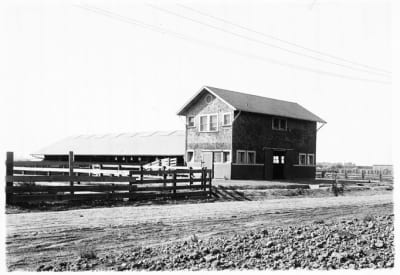
Hickey Gymnasium
| Completed: | 1938 |
| Materials: | Concrete |
| Cost: | $299,655 |
| Financing: | State appropriation |
| Architect: | William C. Hays |
| Dedication: | On May 20, 1972 the building was named for Vernard B. Hickey (1900-1988). Hickey served as Football Coach from 1937-1948 and Athletic Director from 1961 until his retirement in 1967. He also coached baseball, basketball, water polo, swimming, and golf. |
| History: | Originally called the Physical Education Building, the structure replaced the old Recreation Hall and provided the campus with the first swimming pool. Basketball games were held here until the new Recreation Hall was built in 1977. As of 2014, the building is home to Intercollegiate Athletics as well as the Physical Education and the Military Science Departments. |
Hickey Gymnasium Addition
| Completed: | 1963 |
| Materials: | Tilt up concrete |
| Cost: | $857,876 |
| Financing: | State appropriation |
| Architect: | Barovetto & Thomas |
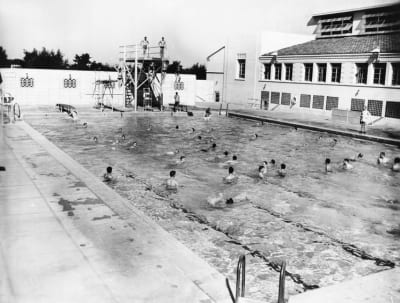
Hoagland Hall
| Completed: | 1959 |
| Materials: | Reinforced concrete |
| Cost: | $1,691,668 |
| Financing: | State appropriation |
| Architect: | Barovetto & Thomas |
| Dedication: | On January 30, 1960, the hall was named for Dennis Robert Hoagland (1884-1949), Professor of Plant Nutrition at UC Berkeley. |
| History: | Originally used by the Soils and Plant Nutrition Departments, as of 2014, the building housed the Analytical Laboratory, Atmospheric Science, Safety Services, and classrooms for Staff Development and Professional Services. |
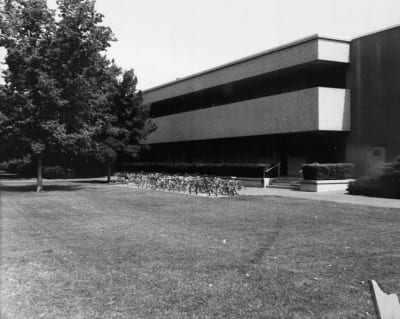
Horticulture Hall
| Completed: | 1922 |
| Materials: | Masonry and stucco |
| Cost: | $97,865 |
| Financing: | State appropriation |
| Architect: | William C. Hays |
| History: | Located near the present day site of Wellman Hall, it housed the Botany, Pomology, and Viticulture Departments. This building and Roadhouse Hall were constructed as the first two “permanent” structures on campus. However, Horticulture Hall was razed in August 1968. |
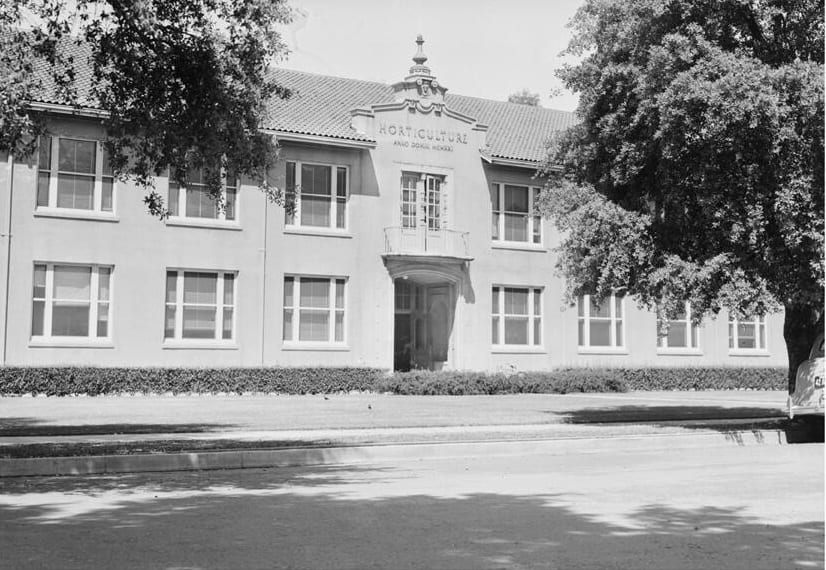
Hunt Hall
| Completed: | 1949 |
| Materials: | Reinforced concrete |
| Cost: | $1,454,716 |
| Financing: | State appropriation |
| Architect: | Elkbridge T. Spenser |
| Dedication: | The building was dedicated on March 22, 1949 to Thomas Forsyth Hunt (1862-1927). Hunt served as Professor of Agriculture at the University of California, Berkeley and Dean of the College of Agriculture (now the UC Davis). |
| History: | Hunt Hall, which contains a 200 seat lecture hall, previously housed the Department of Agronomy and Range Sciences. As of 2014, it was home to the Agricultural Issues Center, Environmental Design and Landscape Architecture, Global Livestock CRSP, Human Ecology, and the Center for Biophotonics Science and Technology |
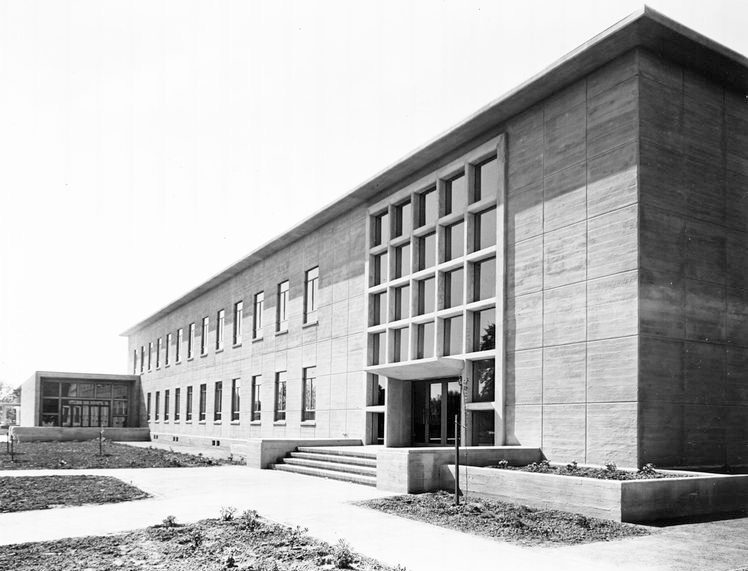
Hutchison Hall
| Completed: | 1963 |
| Materials: | Reinforced concrete |
| Cost: | $3,385,249 |
| Financing: | State appropriation and a federal grant |
| Architect: | Anderson, Simonds, Dusel & Campini |
| Dedication: | This building was dedicated to Claude B. Hutchison (1885-1980) who served as Professor of Agriculture (1922-1952); Dean of the College of Agriculture (1922-1925); and Vice President, University of California (Systemwide) (1945-1952). |
| History: | In 2000, the building housed the Microbiology, Nematology, and Plant Pathology Departments as well as the Center for Engineering Plants for Resistance Against Pathogens (CEPRAP) and the Facility for Advanced Instrumentation. As of 2014, it housed the Entomology and Nematology and Plant Pathology Departments as well as the Science and Society Program. |
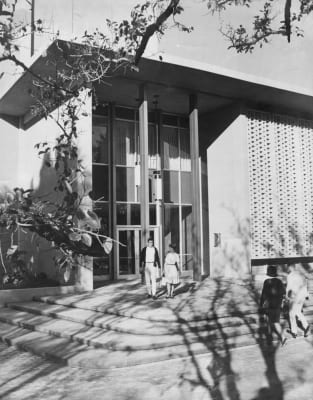
Kerr Hall
| Completed: | 1969 |
| Materials: | Concrete frame with a facing of rose brick. |
| Architect: | Frederick L.R. Confer & Associates |
| Dedication: | On November 25, 1975 the building was dedicated to Clark Kerr (1911-2003). Kerr served as Professor of Industrial Relations (1945-1952) and Chancellor (1952-1958) at the University of California, Berkeley. In 1958, he was appointed President of the University of California, a position he held until 1967. |
| History: | The building was originally known as Academic Office Building (AOB) #3. At the time of the building’s dedication in 1975, it contained offices for the following departments and units: Economics, Education, Geography, Mathematics, Black Studies, UCD Spectator, Teaching Resources Center and the Water Resources Center. In subsequent years, it was also home to Afro-American Studies, the Division of Statistics, the Davis Honors Program, the Education Abroad Program, and the John Muir Institute of the Environment. As of 2014, Kerr Hall houses the following departments: Communication, Linguistics, and Political Science. |
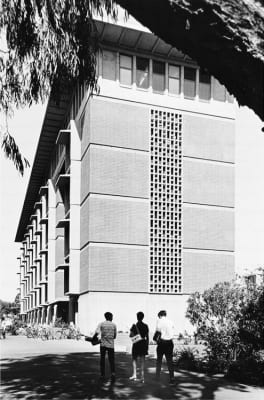
Kleiber Hall
| Dedication: | In 1972, this lecture hall was dedicated to Max Kleiber (1893-1976), Professor of Animal Physiology from 1929-1960. |
| History: | This building has always served as a lecture hall. |
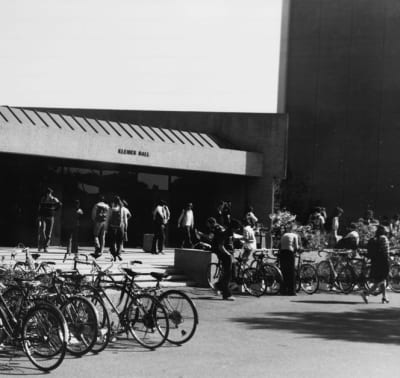
Mann Laboratory
| Completed: | 1965 |
| Materials: | Concrete |
| Cost: | $673,642 |
| Financing: | State appropriation and the National Science Foundation |
| Architect: | Cox, Liske & Assoc. & Edw. Simonds |
| Dedication: | On March 22, 1967 the laboratory was dedicated to Louis K. Mann (1915-1964), an Oleculturist in the Experiment Station. |
| History: | Originally known as the Vegetable Crops Controlled Temperature Facilities, the building was constructed as an interdepartmental plant growth laboratory used for research in postharvest physiology of vegetables. |

Meyer Hall
| Completed: | 1987 |
| Cost: | $41 million |
| Architect: | Hellmuth, Obata, and Kassabum Inc. |
| Dedication: | On Picnic Day, April 15, 1989 the building was dedicated in honor of James Meyer. Meyer (1922-2002) served as Professor of Animal Science (1951-1963), Dean of the College of Agricultural and Environmental Sciences (1963-1969), and Chancellor (1969-1987). |
| History: | Originally named the Food and Agricultural Sciences Building, it has always served as the home for Animal Science, Avian Sciences, Environmental Sciences, and Nutrition. The building consists of two four story wings – one containing offices and the other for laboratories – connected by a courtyard and bridges. |
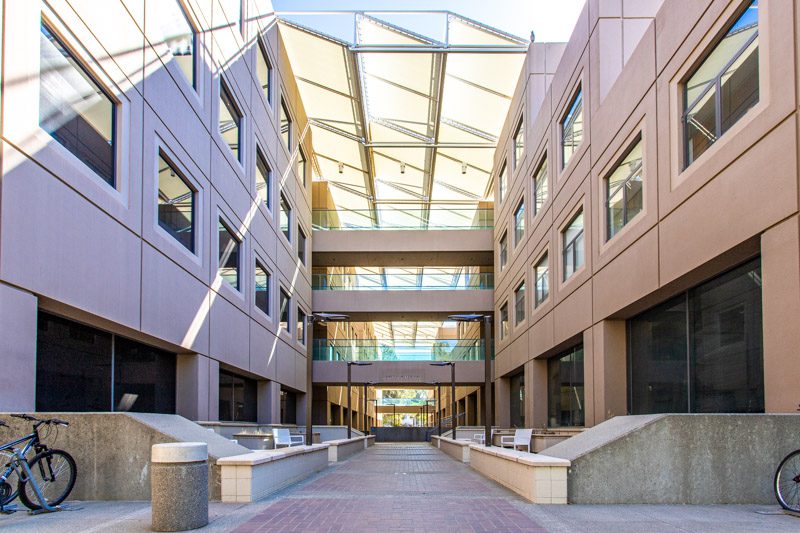
Mrak Hall
| Completed: | 1966 |
| Materials: | Reinforced concrete |
| Cost: | $1,984,743 |
| Financing: | State appropriation |
| Architect: | Gardner A. Dailey |
| Dedication: | In July 1969, the building was named for Emil Mrak. Mrak (1901-1987) served as Professor and Chairman of the Food Science and Technology Department at UC Davis from 1951-1959 and Chancellor of the campus from 1959-1969. |
| History: | Originally named the Administration Building, this was the first major building constructed to house the campus administration exclusively. Prior to the completion of this building, the Chancellor’s Office was located in University House. In 2014, Mrak Hall housed the following offices: Academic Affairs, Academic Federation, Academic Senate, Administrative and Resource Management, Admissions, College of Agricultural and Environmental Sciences, Budget and Institutional Analysis, Campus Community Relations, Campus Counsel, Capital Resource Management, Chancellor, Graduate Studies, Provost, Strategic Communications, University Outreach & International Programs, and University Registrar. |
